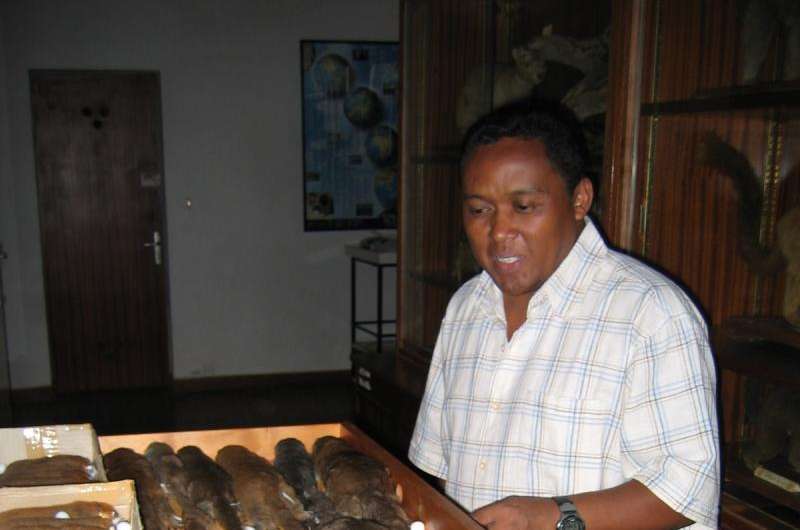Three new primate species discovered in Madagascar

Scientists from the German Primate Center (DPZ), the University of Kentucky, the American Duke Lemur Center and the Université d'Antananarivo in Madagascar have described three new species of mouse lemurs. They live in the South and East of Madagascar and increase the number of known mouse lemur species to 24. As little as 20 years ago, only two species of these small, nocturnal primates were known. New genetic methods and expeditions to remote areas have made the new descriptions possible (Molecular Ecology).
Mouse lemurs are small, nocturnal primates, which are only found in Madagascar - and they all look very similar with their brown fur and large eyes. Different species can be distinguished reliably only by means of genetic methods. However, how great the difference between two populations has to be to define it as a new species is a source of continuous discussion. "By using new, objective methods to assess genetic differences between individuals, we were able to find independent evidence that these three mouse lemurs represent new species," says Peter Kappeler, Head of the Behavioral Ecology and Sociobiology Unit at the German Primate Center. In addition, the analysis confirmed the status of the previously described 21 species. "The genetic techniques we used could facilitate species identification, thus also contributing to further new descriptions in other animal groups," says Peter Kappeler.
Only three years ago, the same research groups had described two new mouse lemur species. The closely related 30g Madame Berthe's mouse lemur is the smallest primate in the world. Scientists from the German Primate Center discovered it in 1993. Besides improved analytical methods, expeditions to remote and inaccessible forests contribute to the fact that the diversity of these distant relatives of humans becomes better known. "To know the exact distribution area of individual species is necessary to identify functioning protected areas," says Peter Kappeler, who has conducted research at the field station of the German Primate Center in Madagascar for more than 20 years. "Furthermore, this new information is an important element towards better understanding how biodiversity on Madagascar arose."

Ganzhorn's mouse lemur (Microcebus ganzhorni) was named after the ecologist Professor Jörg Ganzhorn from Hamburg University, who has been engaged in research and protection of lemurs for decades. It was Ganzhorn who initiated the field research of the German Primate Center in Madagascar in the 1990s. Also in the Southeast of the "Big Island" Microcebus manitatra is to be found, whose name symbolizes the expansion of the range of a subgroup from western Madagascar. The third one, Microcebus boraha, is named after its location on the Island of Sainte Marie (in Malagasy Nosy Boraha).
According to the "Red List" of the IUCN more than 100 known species of lemurs are threatened by extinction and represent the world's most endangered group of mammals. Deforestation and hunting are the main causes of the threat to lemurs in one of the poorest countries of the world.
More information: Scott Hotaling et al. Species discovery and validation in a cryptic radiation of endangered primates: coalescent-based species delimitation in Madagascar's mouse lemurs, Molecular Ecology (2016). DOI: 10.1111/mec.13604
Journal information: Behavioral Ecology and Sociobiology , Molecular Ecology
Provided by The German Primate Center



















